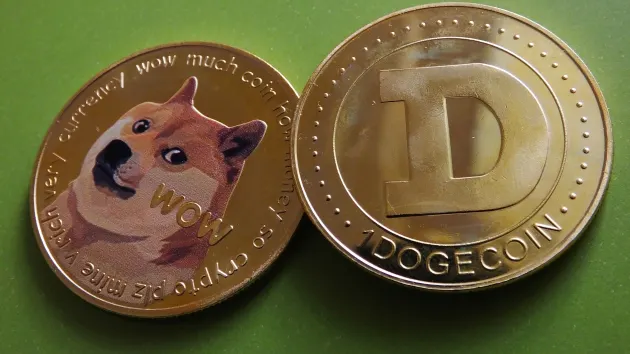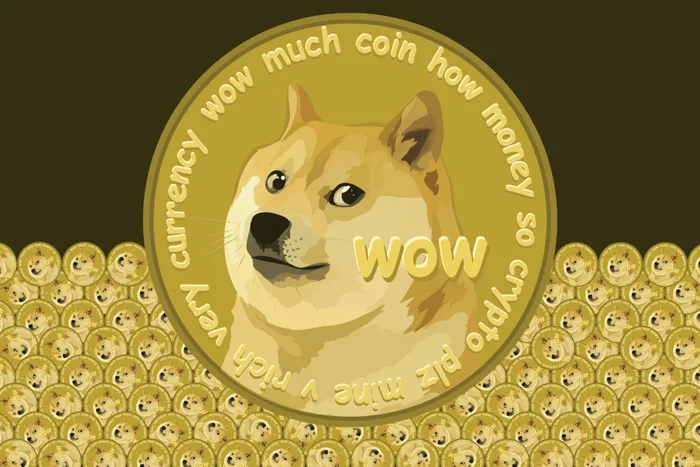Table of Contents
The origin of Dogecoin is one of the most unexpected chapters in crypto history. What started as a playful internet meme-inspired coin featuring a smiling dog has grown into a global digital asset, with daily trading volume reaching billions of dollars at its peak. Its rise wasn’t driven by hype alone, a culture powered it, and a surprising level of real utility that most people never expected from a “joke” coin.
Behind the humor is a community that transformed Dogecoin into a phenomenon. They’ve raised money for global causes, supported creators, built tools, and pushed Dogecoin into mainstream conversations. Today, Dogecoin functions as a fast, low-cost digital currency with practical use cases and many more.
This guide breaks down everything you need to know about Dogecoin — which is one of the top meme coins — including where it came from, how it works, what makes it different, how mining keeps it alive, and why it continues to attract attention from beginners and seasoned traders alike.
What is Dogecoin?

Dogecoin is a cryptocurrency that began as a playful experiment in 2013, created by Billy Markus and Jackson Palmer. Inspired by the popular “Doge” Shiba Inu meme, it was designed as a more friendly and accessible alternative to Bitcoin, appealing to both newcomers and experienced crypto users.
The coin operates on its own blockchain and uses an inflationary token model, meaning there is no maximum supply of Dogecoin. This allows for low transaction fees and encourages regular use rather than hoarding.
Dogecoin is often called a “community coin” because of the passionate network of users who support it. From funding charity projects to tipping online creators, its community has been central to its growth and enduring popularity.
Key Features of Dogecoin
Here are the main features that have helped Dogecoin stand out in the crowded crypto space.
1. Fast and Low-Cost Transactions
Dogecoin’s blockchain confirms transactions much faster than Bitcoin, and its fees are minimal. This makes it ideal for everyday payments, online tipping, and microtransactions.
2. Inflationary Supply
Dogecoin has no maximum supply. New coins are continuously mined, which keeps the network active and encourages spending rather than long-term hoarding.
3. Strong Community Support
Dogecoin is famously a “community coin.” Its supporters have driven fundraising campaigns, charitable donations, and viral online initiatives, creating a culture of generosity and fun.
4. Accessibility
Dogecoin is easy to buy, store, and use, even for crypto beginners. Its approachable branding and active online presence make it one of the most recognizable digital currencies.
5. Security and Reliability
Built on the same principles as Litecoin, Dogecoin’s blockchain is secure and stable, providing a trusted platform for transactions worldwide.
Uses and Applications of Dogecoin
Dogecoin has evolved beyond its meme origins to become a cryptocurrency with real-world applications. Its fast transactions, low fees, and community-driven culture make it suitable for a variety of uses.
1. Online Tipping Culture
One of Dogecoin’s most popular uses is tipping content creators online. Users can send small amounts of Dogecoin as a token of appreciation, making it a fun and practical way to support creators without high fees.
2. Payments and Merchants
Several online retailers and service providers accept Dogecoin as a payment method. Its low transaction costs and speed make it ideal for everyday purchases, from digital goods to charitable donations.
3. Fundraising and Charity
Dogecoin’s community has a long history of organizing fundraising campaigns. From sponsoring sports teams to supporting charitable projects, the coin has been used to drive meaningful social impact.
4. Investment and Trading
While Dogecoin has practical uses, it is also actively traded on cryptocurrency exchanges worldwide. Its liquidity and popularity make it attractive to both beginner and experienced traders.
5. Experimental Blockchain Projects
Developers sometimes use Dogecoin in blockchain experiments or integrate Dogecoin into gaming, NFTs, and Web3 projects, expanding its role beyond simple transactions.
How to Buy and Store Dogecoin

Buying and storing Dogecoin is simple, but it’s important to follow safe practices to protect your funds. To buy Dogecoin (DOGE), you typically use a cryptocurrency exchange or online broker.
- Choose a crypto exchange or broker (e.g., Coinbase, Binance, Kraken, eToro, Revolut).
- Create and verify your account with your personal information and KYC documents.
- Deposit funds via debit/credit card, bank transfer, Apple Pay, Google Pay, or PayPal.
- Buy Dogecoin by selecting the DOGE trading pair and entering the amount.
- Store Dogecoin in an exchange wallet or transfer it to a private wallet (software or hardware) for added security.
Risks of Using Dogecoin
While Dogecoin has become a popular and accessible cryptocurrency, it comes with certain risks that users should be aware of to trade more confidently and avoid common pitfalls.
1. Price Volatility
Dogecoin’s value can fluctuate significantly in short periods. Market hype, public figures, social media trends, or major announcements can cause rapid price swings, which may affect both casual users and investors.
2. Inflationary Supply
Unlike Bitcoin, Dogecoin has no maximum supply. While this keeps transaction fees low, it can also limit its long-term value appreciation compared to deflationary cryptocurrencies.
3. Limited Development
Dogecoin’s development team is smaller compared to larger cryptocurrencies. While the network is stable, fewer resources may mean slower updates or fewer new features over time.
4. Security and Scams
Like all cryptocurrencies, Dogecoin users must be vigilant against phishing attacks, fake exchanges, and wallet scams. Improper handling of private keys or using untrustworthy platforms can lead to permanent loss of funds.
5. Speculative Nature
Many people use Dogecoin for short-term trading or speculative investing. This can amplify risk, especially for beginners who may be influenced by hype rather than fundamentals.
Things You Consider When Investing in Dogecoin
Investing in Dogecoin can be exciting, but it’s important to approach it with caution and a clear understanding of the factors that may impact your investment.
1. Long-Term Potential vs. Short-Term Hype
Dogecoin experiences frequent hype cycles driven by social media and celebrity mentions. Evaluate whether your investment is for short-term gains or long-term potential.
2. Market Trends and Investor Sentiment
Cryptocurrency markets are highly influenced by trends and public perception. Monitoring sentiment can help you make more informed entry and exit decisions.
3. Inflationary Model
Dogecoin has no maximum supply, which can dilute value over time. Understanding how its inflationary model impacts prices is important for long-term planning.
4. Comparison to Other Cryptos
Consider how Dogecoin stacks up against Bitcoin, Ethereum, and other altcoins in terms of utility, adoption, and network development.
5. Risk Management
Always do your own research (DYOR) and manage risk carefully. Invest only what you can afford to lose and use secure storage methods to protect your holdings.
Frequently Asked Questions (FAQs) About Dogecoin
1. Is Dogecoin a good investment?
Yes, but it can be high-risk and volatile; invest only what you can afford to lose.
2. How does Dogecoin mining work?
Dogecoin uses a Proof-of-Work (PoW) algorithm, similar to Litecoin, to validate transactions. Dogecoin also supports merge mining with Litecoin.
3. Is Dogecoin safe for payments?
Yes, as long as you use secure wallets and trusted exchanges. Dogecoin transactions are fast and low-cost, making it suitable for payments.
4. What wallets support Dogecoin?
Dogecoin is supported by several wallets, including wallets like Trust Wallet and Exodus, Ledger, Trezor, and Dogecoin Core Wallet.
Conclusion
Dogecoin has grown far beyond a meme. Today, it’s a digital currency with a large, active community, fast transactions, and an expanding range of real-world use cases. Whether you’re investing, or just exploring its community culture, Dogecoin continues to prove why it remains one of the most recognized and talked-about coins in the crypto world.
Like all cryptocurrencies, it carries risks, so it’s important to do your research, manage your exposure, and stay aware of market trends.
Last updated on December 9, 2025

